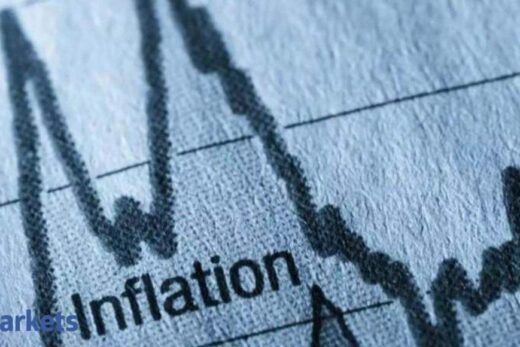Do you think the second COVID wave brought us a challenging time?
Yes, it is a challenging time and I think the last few months have demonstrated what the industry and government can do together and certainly there is a need to do a lot more. First and foremost there is a need to get vaccination back on track. The government needs to do what it needs to do.
We are waiting for the demand to start coming back. We do believe that the economic impact of the second wave has been less than the economic impact of the first wave. We are also in a better condition because globally the macroeconomic situation is much better, economies are picking up speed after the last year. So we believe that we are better positioned now to recover than we were last year at this time. As far as investments are concerned, private sector investments have been low over the last few years. It is typically a function of demand growth and margin expansion or margin growth because if you do not have the profitability and the capacity utilisation, you are typically not thinking of investing in new capacities.
So that is where some sectors, certainly the sector that I am representing in some sense of the term is seeing the time that has come to get the investments back and pretty much everyone in the steel industry has announced expansion plans and significant investments. The total of all the investments announced by the steel industry is Rs 50,000-60,000 crores over the next two to three years.
What can the industry do to bring demand back?
As far as industry is concerned, obviously, if you look at investments that itself will create economic activity. We obviously need to piggyback on the government’s investment plans because the government had in the Budget announced a lot of investment in infrastructure that is a big force multiplier because construction is one of the biggest employment generators, as well as construction, creates economic activity across the country particularly when you look at infrastructure investments. So one is to piggyback on what the government is spending on and two is to supplement with what we would spend on that is certainly one way of getting the demand back. The second part is obviously to make sure that we preserve as many jobs as possible so that people are not postponing expenditures when they are worried about jobs and that is also a function of the economic activity coming back but that is where the industry can play a role and most importantly like I said the industry needs to play a role on vaccination because that is the best way to secure us against the derailment.
Does India need a big-bang stimulus? Does it need constant interventions by the government as it recovers from the second wave?
There are two things that we believe need to be done. One is to make sure that all the money that has been committed in the budget for the investment or for the infrastructure needs to be spent and we need to see the money on the ground. The second part is what we have asked for yesterday is for another stimulus of at least three lakh crore because we believe that the revenues have been stronger than expected. There is a bit of a surplus from RBI as well as FCI. So we forecast that the fiscal deficit will be at around 6.8% and what CII is recommending is that if we spend 1.2-1.3% more which is about 270,000 crores, then you are at about 8% fiscal deficit and that will act as a fillip, particularly this should be money spent in areas which need support. It could be MSME. It could be high contact businesses like retail, hospitality, aviation, etc, which have lost a lot of money. It could also be through the MGNREGA schemes and things like that which really will make sure that money flows into the economy. So these have been our recommendations and this is what we think is important to get back the momentum of growth which was starting to happen between October and March in the last financial year.
The big difference that we are likely to see between last year and this year is inflation. How is the industry going to grapple with that?
That obviously limits the room available to RBI. We have pretty much exhausted the options as far as the monetary policy is concerned and that is where the fiscal stimulus becomes important because a part of this is also supply led and as the supply chain comes back to normal, as companies invest in increasing capacity, some of these inflationary forces will recede.
The second part of the inflationary force is a little bit more to do with the international situation where again many economies have recovered faster than people thought, particularly the developed economies. I think the developing economies with the exception of India and China will struggle to recover as fast as the developed economies for the size of the stimulus in the US and Europe and China etc has led to a quicker recovery than we thought and that is obviously putting pressure on commodity prices including oil. There is obviously some inflationary pressures but we feel some of it will recede as the supply comes back on stream in many areas.
When crude goes up it is never good news for the Indian economy and we have started seeing the levels that we have not seen since 2018. What is your take on it?
A lot of it has to do with global macroeconomic activity. If you look at oil, it is also reflecting the recovery. In India, if you look at oil, the government should look at the taxes and see what is it that they can do on the taxes which had been increased over the last three years as oil prices dropped so is there any headroom to give back some of those taxes to the customers. This is something which impacts the centre and the states so I think that is something that the government can review.
As far as the commodities are concerned, it is happening globally but I think it will just trigger an investment cycle certainly in countries like India where you can produce steel because you have the iron ore and you have the market so to some extent this is something which will get addressed over the next couple of years at least as far as the Indian market is concerned. But globally, what is happening is two things; one is different countries are taking different calls as far as exports are concerned. Even if you look at steel, China’s planning has made zero path. It is saying that why should we export steel and leave behind 100-120 million tons of carbon. So China is discouraging the exports of steel, Japan which is a big exporter of steel has also decided that it should not have production in Japan for exports, they would rather produce in the destination markets.
We are seeing the world trade in some of these commodities being impacted by climate change commitments which different governments are making. It is also impacting the cost curve in many countries because there is a carbon cost, for instance – in Europe. The second side is the demand side, with everyone spending a lot more on infrastructure the demand side is also stronger than people expected, so the supply side is getting a bit tighter, the demand side is getting a bit stronger that is why you have higher prices than you have seen on an average in the last 10 years.
With these higher prices and seeing some of the metals crack, do you think that this is all an aberration? What impact is it going to have on the Indian economy?
Nobody likes this kind of volatility neither do steel companies like prices fluctuating because we plan investments over a longer period of time and do not plan based on peaks and troughs that we see so often. But, there is no easy solution to it. Part of it is speculative right and this is what the Chinese government is trying to work on. They are trying to work on the speculative element of the prices, structural elements are there for good but the speculative elements is something that they are trying to discourage but on a longer-term basis, the only answer to this situation is to have more production capacity available in the country which is good for India because that will trigger investment.
As far as its impact on the costs is concerned, there are two dimensions to it. One is cost but I do not see it to be at this level forever, so it will go to some volatility but I think the larger issue which we need to address and which we are discussing at CII is a lot of people are caught in the middle. If you look at the MSME sector part of the problem is that they have a lot of fixed-price contracts whereas input cost fluctuates significantly. So how is it that through contracting, we can mitigate the risk for the MSME sector? There are models which operate in other countries even if we look at many private sector players. There is a price variation clause also that we can have contracting done in a manner that the risk does not lie entirely on the MSMEs who really get sandwiched between fixed-price contracts and fluctuating input cost but this means that when the prices fall, you will have to adjust accordingly same as when prices go up you adjust accordingly. I think some of these need to be thought through because volatility will be there. Commodity cycles will depend on what happens more outside the country than what happens in the country and we need to be better prepared as an industry and particularly we need to help the MSMEs be better prepared.
Not only MSMEs but some of the most renowned infrastructure companies in the country are also figuring out what to do next. What is the way out of this mess?
I do not think there is an easy solution for existing projects unless there is a bilateral discussion between the people who are given the orders and people who have accepted the orders but the point that you are seeing the volatility of 30-40% is it depends on what stage you try to mitigate the risk. If you look at a country like Singapore you know for some of the government projects there is an index for the steel price because steel is maybe 5%, 10%, 15% of the total cost so if there is a 30% fluctuation in steel price because those are not very common even if it happens is a 5% fluctuation in cost so you need to look at where in the value chain can you mitigate the risk or who is it that this kind of fluctuation has less impact than for somebody for whom steel is 60%, 70%, 80% of the cost right.
Go to that point in the value chain where the impact of the volatility is less and then work with them to see how can you have a contract which mitigates this risk. There are different models to work at. One needs to look at it over a longer term and develop a mechanism that may reduce the opportunity to make more profits in a falling market but also minimises the risk in the rising market.



